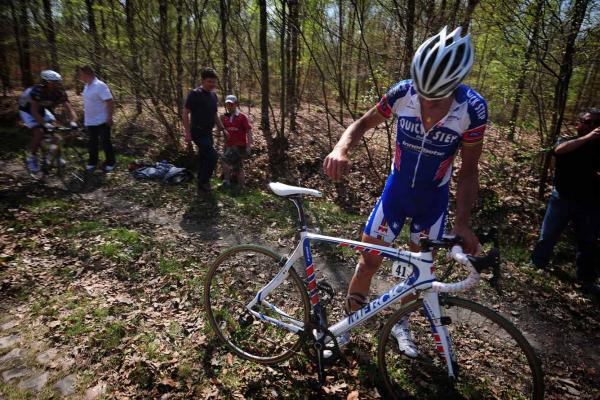The ever-evolving classics
One-day racing just a sign of the times

If you play word association with the spring classics maybe you'll think of legends, history and longevity. After all the word classic is often used to describe long-standing or ancient things, like a classic car or classical Greece.
But take a closer look and the classic races on the cycling calendar are forever changing. What we might think of as long-running races are constantly changing and evolving to suit their environment.
Take the new Tour of Flanders route for 2012 which brings big changes to the format used in recent years. Many were shocked to see the Kapelmuur climb dropped from the route, it was almost sacrilegious to remove the climb with its chapel from the race. But big change is quite normal. Over the years both the start and finish town have changed many times. Above all, the organisers have changed the nature of the race with the addition of the "hellingen" or the steep climbs in order to reduce the probability of a bunch sprint. The Koppenberg, often viewed as integral to the legend of the race, was only included in the mid-1970s when a local informed race organisers about a hidden farm track.
As for Paris-Roubaix, well it's been almost half a century since the race actually started in Paris. Instead it actually starts some 75km away of the French capital in the town of Compiègne. Many complain when low-cost European airlines advertise flights to Paris only to land in a provincial airport far from the city but cycling fans don't seem to mind the false name of Paris-Roubaix, perhaps because it makes the race sound even longer and harder than it is, perhaps because it reaches back in history too. Moving the start isn't the only change. The nickname "Hell of the North" has nothing to do with the bone-shaking, frame-snapping cobbles. Instead it came about after riders discovered firsthand the devastation caused by the trench warfare of the First World War. For a long time cobbles were the norm when it came to road surfaces, some northern cities in France still preserve their cobbled streets for reasons of heritage and tourism but most have vanished. But a race from Paris to Roubaix on normal roads and would be flat and almost certain to end in a bunch sprint. So like their Flemish cousins, the organisers went on the hunt for cobbled farm tracks perilous enough to fragment the peloton and promote attacks.
It's the same with the other races. Milan-San Remo has seen several course changes over the years and the finish location is often a subject of dispute between the organiser, the municipal authorities and local shopkeepers. Liège-Bastogne-Liège and the Flèche Wallonne have been modified in recent years. And this year's Amstel Gold Race sees the organiser adding more climbing into the final moments before the traditional finish on the Cauberg.
By contrast last weekend's Strade Bianche race in Italy feels like an event that's been on the calendar for years. But in fact it's almost brand new since the first edition was in 2007. Race organisers RCS have made a modern race into a classic almost overnight thanks to an exciting course, but also by borrowing heavily from cycling's past. The unpaved sections, the images of dust-coated riders and the uphill finish into the walled city of Siena lend a retro feel.
All the big classics might date back a century or more but they have evolved over time. Once upon a time these races were there to sell newspapers or publicise velodromes, today they are run with TV viewers and event sponsors in mind. So the next time you watch a classic, remember it is a race with tradition and history but often a modern event that regularly adapts to suit the times.
The latest race content, interviews, features, reviews and expert buying guides, direct to your inbox!
The Inner Ring blog has rapidly emerged as one of the most well informed and informative blogs about professional cycling.
The author has preferred to keep his identity a secret but clearly has a finger on the pulse of the sport. He writes from a fan's point of view but has inside knowledge of the sport thanks to a network of contacts and a close monitoring of the cycling media.
Link: inrng.com